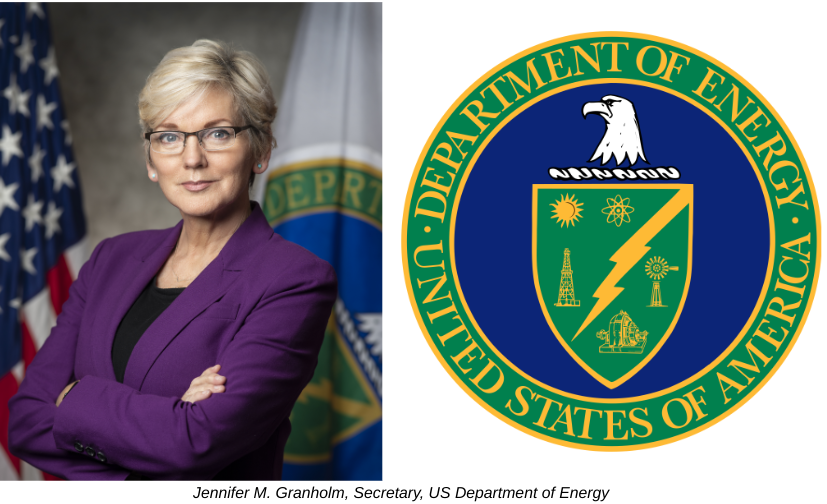|
Getting your Trinity Audio player ready...
|
- Inaugural floating offshore wind shot summit advances technologies to power millions of homes
- The Biden-Harris Administration aims to reduce the cost of floating offshore wind energy by more than 70% by 2035
- Coordinated actions will create thousands of good-paying jobs while strengthening US energy security
The U.S. Department of Energy (DOE) announced new investments to secure U.S. leadership in floating offshore wind development by advancing offshore wind transmission planning, research and technology, and partnerships. These announcements are part of the Biden-Harris Administration’s Floating Offshore Wind Shot Summit, with the Departments of Energy, the Interior, Commerce, and Transportation convening stakeholders to drive progress. With two-thirds of America’s offshore wind resource located in deep-water areas that require floating platforms, capturing this vast potential could bring the benefits of clean power to millions of American homes and businesses. Today’s new actions support the goals of the Administration’s Floating Offshore Wind Shot to reduce the cost of floating offshore wind energy by more than 70% by 2035 and deploy 15 gigawatts of floating offshore wind by 2035. These coordinated actions will help position the U.S. to lead the world on floating offshore wind technology, create thousands of good-paying jobs, lower energy costs for families, and strengthen U.S. energy security.
“Floating offshore wind offers untapped opportunities for us to produce clean, reliable and affordable power for millions,” said U.S. Secretary of Energy Jennifer M. Granholm. “President Biden wants America to become a global leader of offshore wind technology and deployment, and with his historic climate investments, DOE is capturing this potential to spur private investment, boost the domestic supply chain and deliver on our bold clean energy goals.”

Alongside other offshore wind efforts highlighted today in a White House Fact Sheet, DOE is advancing new efforts including:
Transmission planning
With funds from the President’s Inflation Reduction Act, DOE is launching a new West Coast Offshore Wind Transmission Study, a 20-month analysis examining how the country can expand transmission to harness power from floating offshore wind for West Coast communities. The study will use its findings to develop practical plans through 2050 to address transmission constraints that currently limit offshore wind development along the nation’s West Coast. It is also expected to evaluate multiple pathways to reaching offshore wind goals while supporting grid reliability, resilience, and ocean co-use.
See related article: DOE Launches Foundation for Energy Security and Innovation
This study marks the first announcement stemming from $100 million included within the Inflation Reduction Act for transmission planning and complements an analysis released today by DOE that evaluates existing West Coast offshore wind energy transmission research. The analysis identifies deployment gaps that the wind industry must address to successfully develop offshore wind energy off the nation’s West Coast.
New research partnership and initiatives
Today, DOE announced the following research investments and collaborations:
- Expansion of National Offshore Wind Research and Development Consortium (NOWRDC): NOWRDC, a research consortium funded by DOE and others, announced that California is becoming the seventh state, and first state located along the West Coast, to join the Consortium. Pending final approval, California and the Consortium will collaborate to fund R&D projects that directly respond to critical, near-term offshore wind development priorities. California’s addition to the Consortium will bring a new focus on reducing costs of floating offshore wind for ratepayers.
- Initiation of Offshore Wind Operations and Maintenance Roadmap. DOE and its Sandia National Laboratories and National Renewable Energy Laboratory (NREL) announced the development of an industry-informed roadmap for new operations and maintenance technologies and processes to enhance the cost-effectiveness, efficiency, and reliability at offshore wind sites.
- Lidar Buoy Deployment in Hawaii: DOE’s Pacific Northwest National Laboratory and the Bureau of Ocean Energy Management have deployed a floating scientific research buoy located approximately 15 miles east of Oahu, Hawaii to collect offshore wind resource, meteorological, and oceanographic data.
These initiatives reiterate the Biden-Harris Administration’s whole-of-government approach to seizing a generational opportunity to be a leader in floating offshore wind technologies, as part of President Biden’s plan for a clean energy economy built by American workers. Today’s announcements are part of the Department’s inaugural Floating Offshore Wind Shot Summit, which supports the interagency Floating Offshore Wind Shot that was unveiled last September. The Floating Offshore Wind Shot is part of DOE’s Energy Earthshots initiative, which aims to tackle key technical challenges associated with reaching the Biden-Harris Administration’s climate goals by harnessing untapped renewable energy potential to mitigate climate change and advance the equitable transition to clean energy in America.
